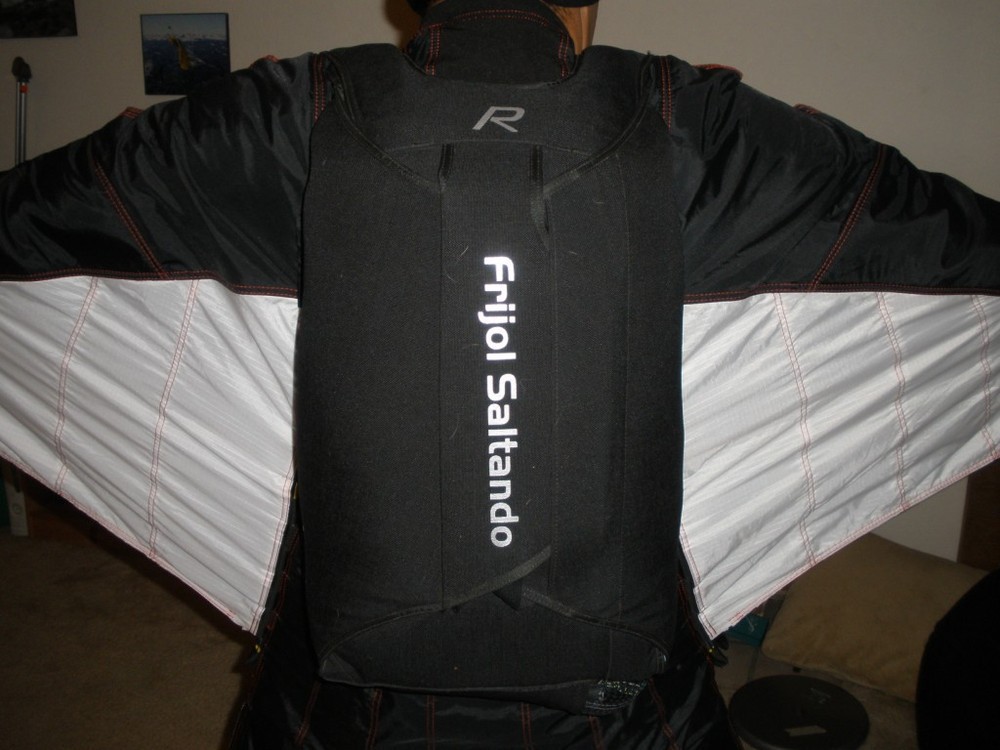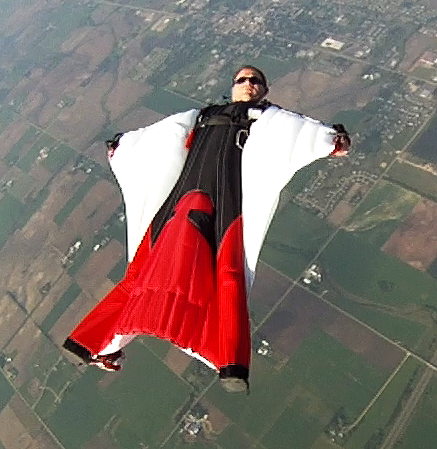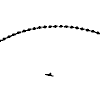Recommended Posts
Butters 0
QuoteLurch, when I teach (it has been a while) I only explain how to ball up. Flying out works sometimes, sure... but they can figure that out on their own one day. Balling up is the prescribed failsafe as far as I'm concerned, and the only thing they need to be taught. I have had a few "big name" instructors tell me they only teach "tracking out" of it, which I think is a horrible idea.
I also think that is a horrible idea. I think you should give your student all the information. Try to track out of it, then try to ball up out of it, then pull ... I treat it like other areas of skydiving, you try it, if it doesn't work you try it again, if it still doesn't work you move on.
That photo is crazy. I think you need to use more "red eye reduction". ![]()
Your mom goes HandHeld
lurch 0
In any case, I found half the battle is controlling the student's exit. My first year or so of teaching, I had a fair number of students look down as they exit, either looking at me following me out, or just looking down and going into a steep headfirst dive. Sometimes resulting in random flight paths till they stabilize.
I eventually figured out I could more or less ensure a clean head-high exit by having them look at the prop, and exit first, before me. Because if they're a bit overwhelmed or forget to look at the prop, they always look up at me for reassurance, which puts them in a neat, head-high position, they hit the air rock steady, and I'm in their field of view the whole time for the two seconds it takes me to drop in by their side. Psychology.
I had one guy try beating on me for this technique with an outraged tone telling me it was atrocious and if I wasn't going to exit first and lead the student out the door I might as well not even BE there. Took me awhile to get the idea across that having a student exit a split second before me does not invalidate my presence in the skydive, and if you want to manage the potential for student flat spins you do whatever is most effective to accomplish that goal. This thread has been interesting to me for related reasons, my worst nightmare is the possibility of leading a student into a situation they can't get out of with what I've taught them on the ground. I've always known of the potential for a spin to get so far out of control that the only option left was pop-and-pray, but this is the first time I've ever seen it, and it wasn't even a newbie. After seeing this, I'm more likely to adjust what I teach towards leaving out the "track out of it" part for all but the most high-timer students. The time the student spends deciding which option to use could be enough to ensure their efforts to track out of it are wasted.
-B
First flight? Yea, whatever you've found works... keep it simple... The student needs to focus on basic stuff first. But!!!! The student will also be in a small suit!
Here we should be discussing about "continuing education" for wingsuiters.
Say you've mastered a thing or two, want a bigger suit, with a giant tailwing and rock solid inflation... this is beyond first flight stuff, you are no longer overwhelmed with all that new information. This is the point where one needs to realize there is still way more to learn! (and its' a helluva lot of fun, too)
Things that are easy to cope with in the smaller suit don't go so smoothly when you have a bunch of well-inflated fabric to deal with. I think this is what Butters is really getting at. This is where knowing how to fly in all orientations before upsizing comes in handy.
Maybe balling up is all it takes in most cases... but maybe it's a good idea to build a strong skill set so when things get weird, you have more than one possible action to throw at it.
Andreea, it sounds like you are addressing this the same way one would address an unwanted spin or turn while on ones stomach in a typical belly skydive. It doesn't work that way when talking about a real flat spin. Typically speaking things go from normal to out of control in a matter of seconds, as seen in Matt's video and others.
Learning to back fly is a good thing as it teaches additional body control as well as becoming comfortable with an atypical orientation. It is one more tool in your tool box of wingsuit skills to have without a question but it is not the solution or even a partial solution to stopping a flat spin by simply thinking that changing ones asymmetry slightly will stop the flat spin. The only way to stop a flat spin is to remove as much of the surface area that is generating the spin as possible as quickly as possible. That is why balling up into a fetal position is the correct way to stop a flat spin. Doing this breaks the actual flat spin which is where the G forces will eventually cause blackout. It does not however stop tumbling and or instability. This is why one must be able to identify when the flat spin has been dealt with, which is the rapid spinning, and when one is now in a tumble and or un-stable orientation.
It is entirely possible to stop the flat spin and still be tumbling on any of the axis because you are curled up into a ball. There is a marked difference between a flat spin and tumbling and this is where the jumper must be able to differentiate. How does one differentiate? This is where prior experiences gained from doing acrobatics in a wingsuit and or tumbling on a normal skydive come into play as they serve as your frame of reference for determining when you've gone from being in a washing machine on spin cycle to simply tumbling.
Once you've established that you are simply tumbling, you need to make an effort to regain stability. That usually involves stopping any rotation and or returning to a belly to earth orientation. The important part here is that the jumper must know that they must do something. Simply balling up and staying balled up is not a solution and it will not return a jumper to a belly to earth orientation. The jumper must make an effort to stop the tumbling/instability and regain a stable belly to earth orientation. It can be viewed as a 3 step process:
1. Stop the flat spin: Ball up into fetal position....which leads to #2
2. Stop the tumbling: Regain stability using arms and then legs and or roll over once the location of the ground is known..which leads to #3
3. Resume flying
I do not advocate the arching out of it technique because I feel it is misleading and causes people to waste time and allows a real flat spin to build momentum. If you can arch out of it, you are not in a real flat spin, you are experiencing a form of instability no matter how exciting or fast you think it is. In terms most people can relate to, a merry go round best demonstrates the difference. Most people remember as a kid laying on the merry go round on their back as someone spun it to the point where you could feel the G forces and you could not move, that is a flat spin. Since we are talking about something that happens in a split second and a decision that has to be made by the jumper in another split second wasting time trying to arch is not a good course of action in my opinion, balling up in a fetal position is. If it turns out to not be a serious flat spin but just some instability you can recover quickly and resume flying. If it is a true flat spin, you stopped it before it built momentum and returned to flight. It is also easier to remember when you are hit with one. BAM!...what do I do? Ball up. How easy is that for the brain to process and the body to do?
In my book, Skyflying Wingsuits in Motion I cover skills that need to be mastered before moving into acrobatics which addresses flat spins and instability issues that can be encountered while attempting these moves. That section could also be a good primer for someone before going to a larger suit.
The bottom line is one must be able to identify what type of situation they are in and take the appropriate actions immediately. As we've just seen with Matt's incident, flat spins are no joke.
Be safe, not sorry.![]()
Some people dream about flying, I live my dream
SKYMONKEY PUBLISHING
lurch 0
Theres a lot of Intros circulating out there now, and the tails aren't exactly small.
I'm thinking the trouble with tacking on a "continuing education" attitude is that its making too much out of a single thing for a very specific one-solution situation. What I get from this incident is that you may not be as balled up as you think you are, even a more experienced pilot, and this kind of thing can be prevented just by increasing community awareness that when we say "Ball up", we mean really, really balled up. I mean, look at what he said and remember what he was thinking feeling and doing at the time. He THOUGHT about balling up, he ACTED to ball up, he FELT balled up, and thought he HAD balled up. But he hadn't.
I think thats what we need to be aware of. We're not very specific about the ballup itself. If the community learns anything from this, I think it ought to be that we should be more specific and systematic about how that ballup is done and taught, so the next time one of us needs to resort to that ballup, the specific action they're thinking of doing is the one thats most effective to control the situation.
-B
What would a list of necessary skills look like for wingsuiters prior to upsizing their suit?
Like the wingsuit version of the flat turn?
The wingsuit version of a downwind landing?
The wingsuit version of a rear riser landing?
The wingsuit version of a front riser approach?
The wingsuit version of consistently landing near a target?
notsane 0
notsane 0
QuoteThe vent size wouldn't make any difference if the wings are airlocked.
That's definitely not true. The internal pressurization of the wings are equal to the difference between what goes out vs what's coming in. The material has a certain porosity, the airlocks don't seal perfectly and there is a de-presurization opening in them. If the air is pouring in thru large inlet vents, you can't get rid of the air in the wing by squeezing it.
My Raptor, Phantom and Stealth suits all have airlocked vents and yet I can easily collapse them.
Scott
Another thing to consider is we are discussing a wing that is already inflated and so think about trying to push the volume of air in the wing through small vents rather than large ones. Plus once the wing is inflated air is no long rushing in. Where would this air go? The wing is already full, so what you have is turbulence around the vent between the air trying to get into the wing and the air that is getting pushed out. The smaller vents makes it harder for this exchange to happen therefore there is somewhat less turbulence around the vent once the wing is inflated. This also makes it harder for the wing to collapse. Consider the difference between a student canopy and a cross-braced one. With your theory the student canopy should be harder to collapse because the openings in the nose are bigger. When in fact the cross-braced canopy is harder to collapse. The openings in the nose of a cross-braced canopy are much smaller to help eliminate the exchange of air at the nose which in turn helps reduce turbulence.
Some people dream about flying, I live my dream
SKYMONKEY PUBLISHING
notsane 0
Your canopy example introduces far too many variables to count, and your thought that the leg-wing volume is perfectly sealed is flawed, even with the depressurization zipper shut.
In a wingsuit wing, the internal pressure is determined by how much air comes in - how much air leaks out. (i.e. a tube has basically no pressure)Limit the air coming in and the pressure will be reduced. Allow an easy exit path for the air already inside the wing, by opening the depressurization zipper ... and now you're dealing with a leg-wing that can be easily collapsed when you're spinning on your back.
If you're saying that designers have no control over how pressurized their wings are, and it's all just hit and miss, then that's totally different.
Maybe all it takes is some magic pixie dust to make a suit that's super rigid (for performance) on its belly and much less so on its back. Either way, I think it would be a safer design.
Scott








Share this post
Link to post
Share on other sites